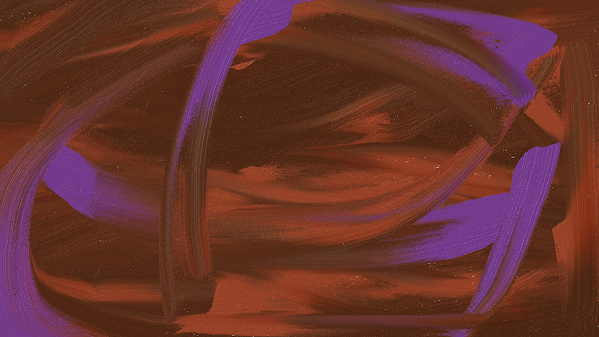“Common sense and instincts can both be useful in the workplace, but they can also have limitations:
Common sense
This skill can help people solve problems, adapt to change, and communicate effectively. It can also help employees make ethical decisions, manage resources, and take calculated risks. Common sense can also help people identify potential risks in the workplace and avoid them. It can also involve being considerate of co-workers and making the workplace more pleasant and efficient. Common sense is based on observation, experience, and intuition. It's not a natural talent, but it can be learned over time by being observant, learning from mistakes, and paying attention to how others solve problems.
Instincts
Also known as intuition, instincts can help people make decisions faster and with less anxiety. They can also help people push boundaries and explore new ideas. However, instincts can be fickle and lead to disaster as often as success if they're not backed up by rigorous analysis. For example, in situations involving workplace relationships, it might be better to trust your head over your gut."

Creative Confluence. Digital art created on canvas. August 7, 2024. Afrika Abney
Creative Confluence - This title reflects the merging of different ideas and emotions represented in the painting, suggesting that it embodies the intersection of common sense and instinctual creativity.
The painting titled "Creative Confluence" is a striking visual representation of the intricate interplay between common sense and instinct. The artwork features a mesmerizing swirl of purple and brown hues, which evoke a sense of depth and complexity. The choice of colors is deliberate; purple often symbolizes creativity and imagination, while brown grounds the piece in reality and practicality. This duality reflects the essential balance required in the workplace, where both common sense and instinct play pivotal roles in decision-making and problem-solving. The swirling patterns suggest a dynamic flow of ideas, illustrating how these two elements can merge to foster innovation and effective communication.
My technique in this digital art piece is noteworthy, as it captures the essence of movement and transformation. The fluidity of the swirls invites viewers to engage with the painting on a deeper level, prompting them to consider their own experiences with intuition and rational thought. The artwork serves as a metaphor for the workplace environment, where individuals must navigate the complexities of interpersonal relationships and resource management. By visually representing the convergence of instinct and common sense, "Creative Confluence" encourages reflection on how these attributes can enhance collaboration and ethical decision-making among colleagues.
This painting is not merely an aesthetic endeavor; it embodies a philosophy that resonates with professionals across various fields. The title "Creative Confluence" encapsulates the idea that effective problem-solving often arises from the synthesis of analytical thinking and intuitive insights. As viewers contemplate the swirling colors, they may find themselves inspired to embrace both their instincts and their learned experiences in their own work environments.
Common sense
This skill can help people solve problems, adapt to change, and communicate effectively. It can also help employees make ethical decisions, manage resources, and take calculated risks. Common sense can also help people identify potential risks in the workplace and avoid them. It can also involve being considerate of co-workers and making the workplace more pleasant and efficient. Common sense is based on observation, experience, and intuition. It's not a natural talent, but it can be learned over time by being observant, learning from mistakes, and paying attention to how others solve problems.
Instincts
Also known as intuition, instincts can help people make decisions faster and with less anxiety. They can also help people push boundaries and explore new ideas. However, instincts can be fickle and lead to disaster as often as success if they're not backed up by rigorous analysis. For example, in situations involving workplace relationships, it might be better to trust your head over your gut."
Creative Confluence. Digital art created on canvas. August 7, 2024. Afrika Abney
Creative Confluence - This title reflects the merging of different ideas and emotions represented in the painting, suggesting that it embodies the intersection of common sense and instinctual creativity.
The painting titled "Creative Confluence" is a striking visual representation of the intricate interplay between common sense and instinct. The artwork features a mesmerizing swirl of purple and brown hues, which evoke a sense of depth and complexity. The choice of colors is deliberate; purple often symbolizes creativity and imagination, while brown grounds the piece in reality and practicality. This duality reflects the essential balance required in the workplace, where both common sense and instinct play pivotal roles in decision-making and problem-solving. The swirling patterns suggest a dynamic flow of ideas, illustrating how these two elements can merge to foster innovation and effective communication.
My technique in this digital art piece is noteworthy, as it captures the essence of movement and transformation. The fluidity of the swirls invites viewers to engage with the painting on a deeper level, prompting them to consider their own experiences with intuition and rational thought. The artwork serves as a metaphor for the workplace environment, where individuals must navigate the complexities of interpersonal relationships and resource management. By visually representing the convergence of instinct and common sense, "Creative Confluence" encourages reflection on how these attributes can enhance collaboration and ethical decision-making among colleagues.
This painting is not merely an aesthetic endeavor; it embodies a philosophy that resonates with professionals across various fields. The title "Creative Confluence" encapsulates the idea that effective problem-solving often arises from the synthesis of analytical thinking and intuitive insights. As viewers contemplate the swirling colors, they may find themselves inspired to embrace both their instincts and their learned experiences in their own work environments.